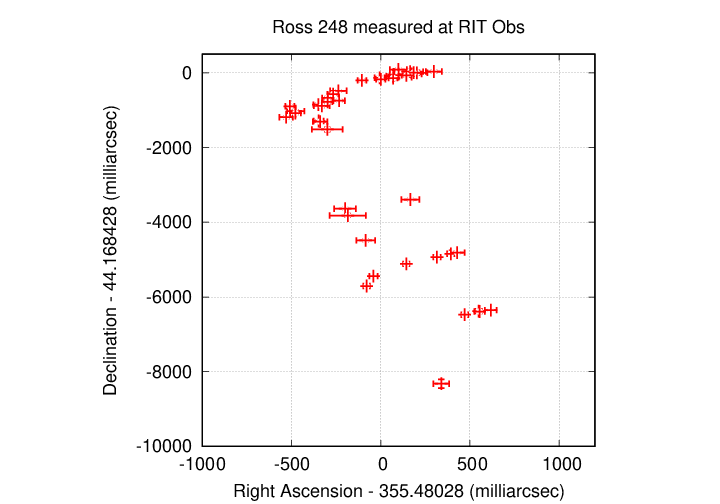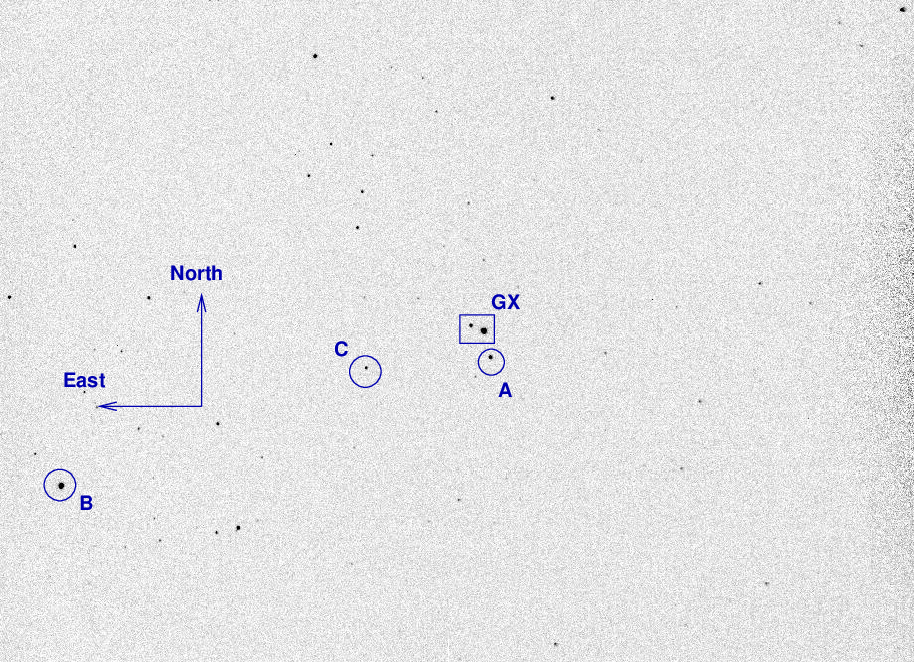
On the night of Oct 03/04, 2024, under good conditions, I acquired images of two stars for long-term astrometric measurements:
Conditions were good, and the measurements look fine.
I also modified the settings in MaximDL for the autoguider display so that the orientation of guider images on the computer screen has the standard "North up, East left" orientation. Under the "Guide" tab, in the "Guider Options" panel, I checked the "Flip Vertically" box. After doing that, I had to make a corresponding change to the guiding corrections panel: I changed the "Y Speed" value from +35 to -35. In practice, I ignore guider corrections in the Dec direction, but this should yield the proper direction and at least approximately the correct speed if it's necessary to guider in Dec.
GX And is a nearby (binary) star which will be the target of a parallax project at some point. One of the two components is bright -- about mag V = 8 -- so one must use short exposures to prevent it from saturating the detector. That may mean that this system isn't as easy to measure as Ross 248 or some others.
These observations involved:
The object is currently close to this position:
RA = 00:18:28.4 Dec = +44:01:31 (J2000)
but it does have a very high proper motion.
A chart of the field is shown below. The size of the chart is about 41 x 27 arcminutes. The noisy area at right (West) is the shadow of the guider's pickoff mirror.

The two components of the GX And binary sit inside the box. I've marked the location of several comparison stars as well.
star UCAC4 B V r ----------------------------------------------------------- A 671-001473 9.939 9.790 B 670-001639 9.413 8.472 C 671-001509 12.712 11.421 11.001 -----------------------------------------------------------
I took a photo of the finder TV's screen when pointing to GX And; this could be a useful reference for the future:
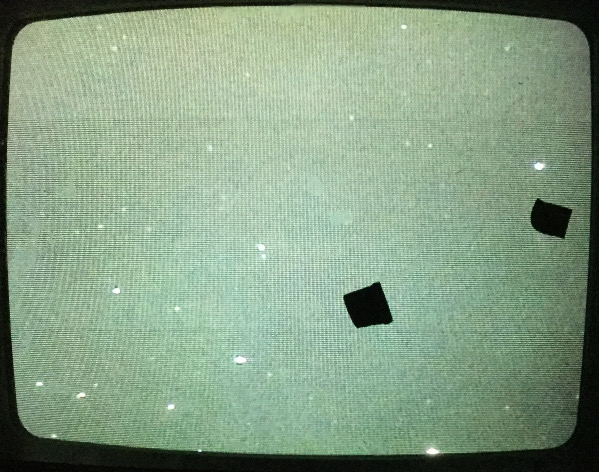
Using the same techniques as described for earlier nights, I matched detected stellar positions to the Gaia DR2 catalog. In this case, I used only stars within a "smaller" subset of the full catalog around the target, those no more than 10 arcminutes away from it.
The target is moving to the upper-right with time, and clearly shows the back-and-forth motion due to parallax.
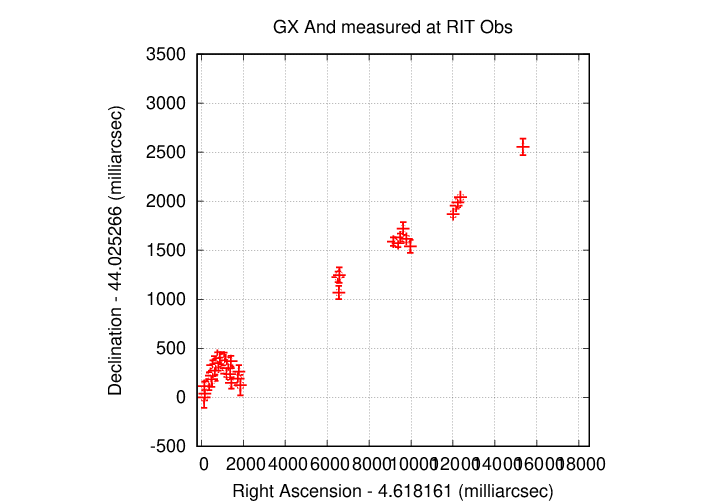
This is one of the stars that a capstone student may study over the next year in a project involving parallax. Ross 248 is a relatively faint red star surrounded by many other stars of similar brightness, so it's a good candidate for high-precision parallax measurements.
These observations involved:
The object is (currently) near position
RA = 23:41:55.27 Dec = +44:10:06.38 (J2000)
A chart of the field is shown below. The size of the chart is about 41 x 27 arcminutes. The noisy area at right (West) is the shadow of the guider's pickoff mirror.
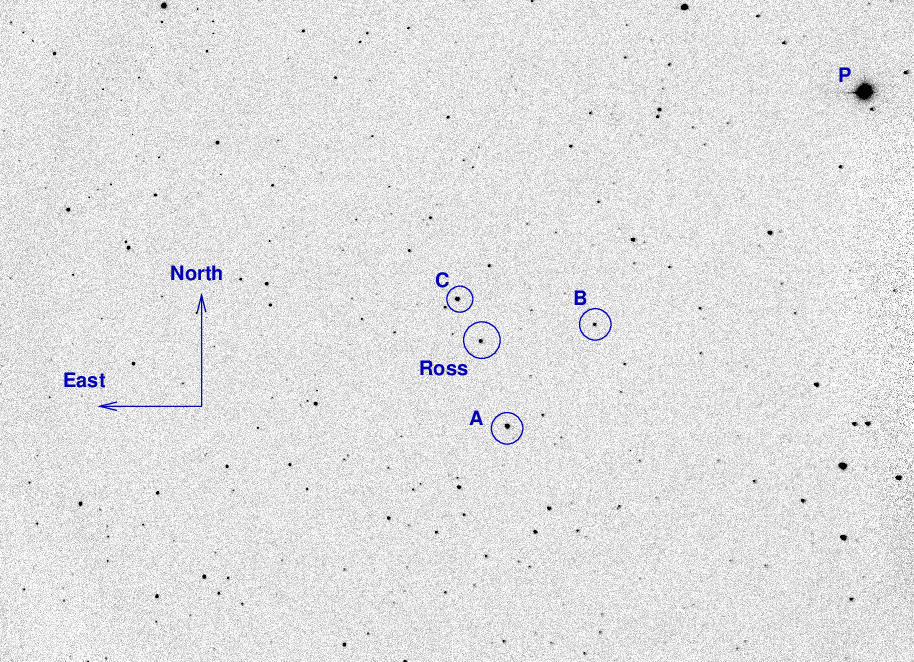
I've marked the location of several comparison stars.
star UCAC4 B V r ------------------------------------------------------------------------- A UCAC4 671-120730 12.617 10.689 B UCAC4 671-120688 C UCAC4 671-120749 10.987 10.663 P kappa And 4.06 4.14 --------------------------------------------------------------------------
I took a photo of the finder TV's screen when pointing to Ross 248; this could be a useful reference for the future:
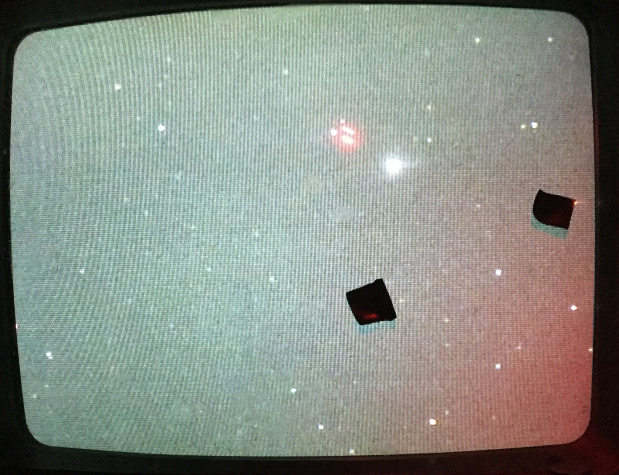
In order to get the best results for Ross 248, it is necessary to use only a subset of the stars in the camera's full field of view. For this evening's data, I chose the "intermediate" subset, and restricted matches to those stars within about 11 arcminutes of the target. It helps to limit the measurement of stars in the images to this same region, too.
Here are the positions I've measured so far. The most recent measurements are at the bottom of this plot.
